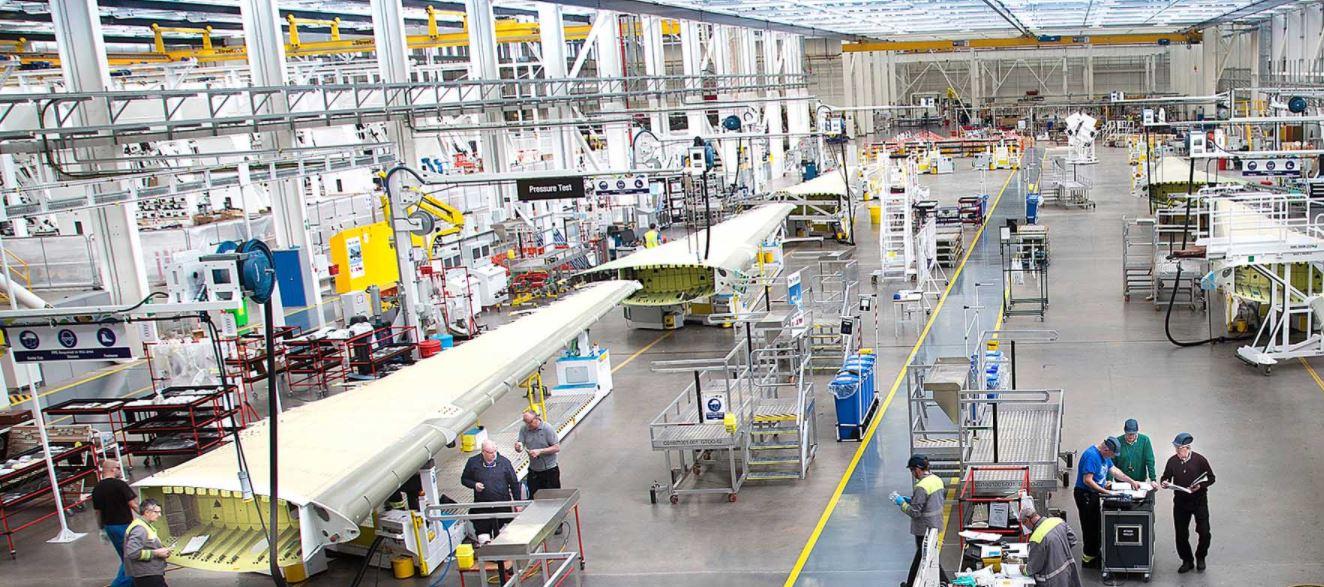Why Don’t We See A Flood Of A&D Bankruptcies? 航空宇宙・防衛関連企業の大量倒産がみられないのはなぜか?

ポジティブな話題が消え去った2020年の中で、中小規模サプライヤーの倒産や、航空宇宙防衛(A&D)部門からの明確な撤退が少なかったことは、比較的良いニュースだったといえるだろう。
ボーイング社のような巨大企業が、自社やサプライヤーを守るために600億ドルの補助金を求めてロビー活動を行うほどの打撃を受けた年だっただけに、2020年は下流の下請け業者の淘汰が始まると思われたが、それは起こらなかった。
Spirit AeroSystems社の社長兼CEO・ Tom Gentile氏は11月のインタビューで、「数社の倒産はあったが、現時点においては驚くほど少ない。文字通り2〜3社だけだ。その理由の一部は、我々がサイクルの中のどこにいるかで説明できると思う。737MAXの飛行停止と、(2019年)12月にボーイング社が発表した生産中断はあまりに急で、我々には反応する時間すらなかった」と話している。
では2021年はどうだろうか?今のところは順調といえる。3大債券格付機関のひとつである、Fitch Ratings社の2020年12月版レポートでは、A&D関連企業によるローンのデフォルト率は、他の製造業と比較して大幅に低い水準に留まると予想されている。
ただし、それはA&D業界がコロナ禍の影響から脱したというわけではない。つまり、サプライヤーが支援を受けながら得た在庫を用いて生産を行いつつ、今後は旅客機の生産率低下に見合う程度の受注しか得られなくなり、そのような状況下でも2020年の流動性低下に伴う資金調達により生じた債務返済のためには事業性を高める必要があることから、財務上の制約は今後数年間かけて厳しくなっていくというのが実情だ。しかし、A&D業界の経営陣が支援を求めて裁判所に駆け込むような事態は避けるべきで、Fitch社のレポートが示すように、これは業界に根付いた排他的な体質によるものといえる。
同社のアナリストは「低いデフォルト率は、長期契約が多いこと、研究開発契約の一部にはコスト超過の構造があることに加え、特定の企業が多くの製品を独占供給していることが要因となっている。特許技術や政府の規制が参入障壁となっており、多くの企業では製品や契約の多様化が進んでいる」と語る。
Fitch社によれば、2019年までのA&Dおよび製造業全般を対象とした高利回り債券の年間デフォルト率比較(過去19年分)を見ると、それぞれ0.9%および2.1%となっており、額面加重した米国市場のデフォルト率3.9%と比較して「大幅に」低くなっている。A&D業界は、この期間に2001年の9・11同時多発テロ、2008年のリーマン・ショック、2010年代にみられたサプライヤーへの圧力、737MAXの飛行および生産停止、トランプ政権による中国やヨーロッパとの貿易戦争などの影響を受けている。
関税は収益性を低下させるが、A&D業界においては顧客に転嫁できることが多く、もしくは大規模なメーカーや1次請けが吸収できるコストだ。「我々は関税がレバレッジが低めの債務者に悪影響を及ぼした例をほとんど見たことがない」と同社のアナリストは述べた。
むしろ、計画実行の稚拙さや、注目されている製品への過度な依存のような、事業ポートフォリオの不適切な変化といった、企業特有の問題が原因であることが多い。「当社としては、この業界における将来の不況は債務者特有の問題が原因となり、契約の喪失、計画実行の稚拙さ、過度に積極的な資本展開に伴うものである可能性が高いと予想している」とFitch社は説明した。
さらに、2001〜2019年にみられた数少ないA&D企業の倒産においては、「積極的な財務戦略」が大きな要因だったと考えられている。当然ながら、「いくつかの」倒産企業はプライベート・エクイティが所有しており、高いレバレッジがかかっていた。しかし、「負担の大きい」契約もまた、倒産の要因になっていた。「一部の例では、倒産企業は契約相手よりもはるかに小規模で、交渉力を欠いていた」とFitch社は指摘する。
今後の見通しとして同社は、デフォルトのリスクが大きいと考えられる債権発行者が記された、「要注意債権(Top Bonds of Concern)リスト」にはA&D企業はおろか製造業さえ含まれていないと述べた。ただし、同リストよりは財務的な柔軟性が高いグループとされる「準要注意債権(Tier 2 Bonds of Concern)リスト」の2番手には、ボンバルディア社が含まれている。
Aviation Week Intelligence Network (AWIN) のメンバーシップにご登録いただくと、開発プログラムやフリートの情報、会社や連絡先データベースへのアクセスが可能になり、新たなビジネスの発見やマーケット動向を把握することができます。貴社向けにカスタマイズされた製品デモをリクエスト。
As far as positive signs go in 2020, a relative bright spot was the dearth of bankruptcies and clear exits from the aerospace and defense sector by small and medium-sized suppliers.
In a year that rattled the behemoth Boeing enough to lobby for a $60 billion federal grant for itself and its providers, 2020 seemed destined to start culling the lower tiers—but it did not happen.
“We have seen a couple of bankruptcies, but surprisingly few at this point, only a couple, really,” Spirit AeroSystems president and CEO Tom Gentile noted in a November 2020 interview. “I think part of that, though, is where we are in the cycle. The [Boeing 737] MAX grounding and then the subsequent pause in production that Boeing announced last December [2019] was so quick that we didn’t really have time to react to it.”
What about 2021? So far so good. According to a December 2020 report from Fitch Ratings, one of the big three debt scoring firms, A&D loan default rates are expected to remain materially lower than the broader cross-section of the industrial and manufacturing sectors.
That is not to say A&D is clear of COVID-19 pressures. In fact, financial constraints will only grow in coming years as suppliers work through backed-up inventory, face new purchasing orders that match lower airliner production rates, and labor to meet greater debt payments due to new financing sought during 2020’s liquidity crisis. But the specter of A&D executives stampeding to the courthouse seeking protection should not occur, and as the Fitch report helps illustrate, it is in part thanks to the clubby, ingrained nature of the A&D industry.
“Low default rates result from the long-term nature of many contracts, cost-plus structure of some development contracts and the benefits of sole-source supplier status, coupled with the proprietary nature of many products for certain companies,” the credit analysts said. “Patented technologies and government regulations create barriers to entry, and many companies have a high degree of diversification of product and contracts.”
A 19-year comparison of the annual high-yield bond default rates for the A&D and broader industrial manufacturing sector through 2019 showed 0.9% and 2.1%, respectively, according to Fitch. Those were both “materially” lower than the 3.9% par-weighted U.S. market default rate. For A&D, this period nonetheless included the aftermath of 9/11, the 2008 Great Financial Crisis and Great Recession, the OEM supplier squeezes of the 2010s, the Boeing 737 MAX grounding and production shutdown, and the Trump administration’s trade wars with China and Europe.
Tariffs do produce a drag on profitability, but generally they are a cost that A&D is able to pass on to customers or be absorbed by the large OEMs and Tier 1s. “We have not observed a material number of instances of tariffs having a substantial adverse effect on smaller leveraged issuers,” the analysts said.
Instead, problems are idiosyncratic to companies and begin with poor execution or unfavorable changes to business portfolios, including over-reliance on exposed products. “Fitch anticipates future distress in the sector will be issuer-specific and likely in conjunction with loss of a contract, poor execution or overly aggressive capital deployment,” the firm said.
What is more, “aggressive financial strategies” seemed to play an important role in driving the handful of A&D bankruptcies tracked in 2001-19. Not surprisingly, “several” of the bankrupt companies were owned by private equity and suffered high leverage levels. But “burdensome” contracts also were a driver of court protection. “In some situations, the filer was much smaller than its contract counterparty and lacked negotiating power,” Fitch noted.
Looking ahead, the credit rating firm said there were no A&D or even industrial manufacturing companies on its Top Bonds of Concern list, which identifies debt issuers believed to have significant risk of default. Still, Bombardier is the second-largest issuer on Fitch’s Tier 2 Bonds of Concern list, a group that have more financial flexibility than those on the Top Bonds of Concern list.